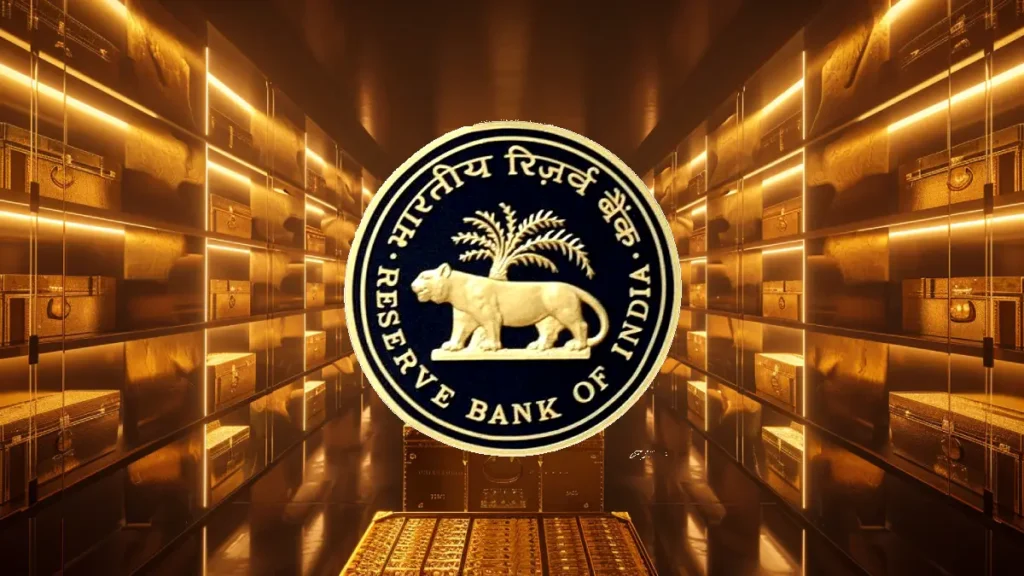According to reports, the Reserve Bank of India (RBI) transferred 1 Lakh Kg(100 tonnes) of Gold from the UK to India’s Vaults. This is the first time since 1991 that India has transferred such a large amount of gold reserves.
More than half of the RBI’s gold reserves are kept overseas with the Bank of England and the Bank of International Settlements. Around one-third of the reserves are stored in India. Moving the gold is expected to save the RBI money on storage costs currently paid to the Bank of England.
RBI Transfers 1 Lakh Kg of Gold from UK to India Vaults
As of March 31, 2024, the RBI held 822.10 tonnes of gold as part of its foreign exchange reserves, up from 794.63 tonnes the previous year. The RBI will save on these storage costs by moving the gold back to India.
Economist Sanjeev Sanyal commented,
For those of my generation, the shipping out of gold in 1990-91 was moment of failure that we will never forget. This is why this shipping back of gold has a special meaning pic.twitter.com/ufMCjHFSMH
— Sanjeev Sanyal (@sanjeevsanyal) May 31, 2024
RBI Secures Customs Duty Exemption for Gold Transfer
The Reserve Bank of India (RBI) Transfers 1 Lakh Kg of Gold from UK to India Vaults. This significant operation required months of careful planning and coordination between the finance ministry, the RBI, and various government departments, including local authorities. To bring the gold into the country, the RBI obtained a customs duty exemption from the central government, which decided not to charge this tax on the gold. However, integrated GST (a tax shared with the states) still applied to the import.
Moving such a large amount of gold needed a special aircraft and strict security measures. Although the main aim was to save on storage costs paid to the Bank of England, these savings are not very large. The 100 tonnes of gold moved represent nearly a quarter of India’s total gold reserves as of the end of March 2024.
Gold’s Emotional Value for Indians
Gold has always been important to most Indians, especially since the Chandra Shekhar government pledged it during the 1991 financial crisis. About 15 years ago, the RBI bought 200 tonnes of gold from the International Monetary Fund and has continued to increase its gold reserves through regular purchases in recent years.
“This shows the strength of the economy and the confidence we have now, which is very different from the situation in 1991,” said a source.
RBI’s Gold Strategy
The central bank’s strategy of holding gold is primarily aimed at:
- Diversifying Foreign Currency Assets: Gold provides a stable and reliable asset that complements other foreign currency holdings.
- Hedging Against Inflation: Gold serves as a hedge against inflation, protecting the value of the reserves over time.
- Mitigating Foreign Currency Risks: Holding gold reduces exposure to risks associated with fluctuations in foreign currency values.
This strategy helps ensure the stability and security of India’s foreign exchange reserves.
RBI’s Gold Historical Context
In 1991, during a severe financial crisis, the Chandra Shekhar government pledged 46.91 tonnes of gold with the Bank of England and the Bank of Japan to secure $400 million. Around 15 years ago, under the UPA government led by Prime Minister Manmohan Singh, the RBI bought 200 tonnes of gold from the International Monetary Fund (IMF) for $6.7 billion to diversify its assets.
In recent years, the RBI has consistently increased its gold reserves. Since December 2017, the RBI has regularly bought gold from the market. As a result, the share of gold in India’s total foreign exchange reserves rose from 7.75% in December 2023 to about 8.7% by April 2024. Domestically, the RBI stores gold in vaults located in its buildings on Mumbai’s Mint Road and in Nagpur.
A World Gold Council report states that global central banks hold about 17% of all the gold ever mined, with reserves totaling 36,699 metric tons by the end of 2023. Most of these acquisitions have happened over the last 14 years, as central banks have been net buyers of gold since 2010.
Also Read:
PhonePe Launches Secured Lending Platform to Expand Loan Offerings
RBI’s Balance Sheet for 2023-24 is About 2.5 times of Pakistan’s GDP
RBI Launches the PRAVAAH Portal, RBI Retail Direct Mobile App, and FinTech Repository
